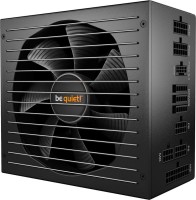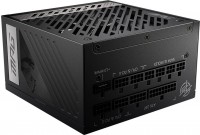How to choose the best power supply for your computer?
We independently test the products and technologies that we recommend.

In short, the power supply is a voltage converter for supplying all the components of your personal computer with direct current and the necessary voltage. The power consumption of a computer can change along with changes in the load on it, which must also be taken into account. Usually, to determine the required power of the block, it is enough to look at the energy consumption of the components and take a little more for adequate operation at higher frequencies or at maximum load.
Experienced users also recommend paying attention to the manufacturer. Some little-known firms offer powerful and productive blocks, asking for ridiculous money in return. After some time, such devices can fail and harm the components of your PC - the likelihood of this is almost impossible to predict. Therefore, it makes sense to initially pay attention to the products of popular manufacturers: Chieftec, CoolerMaster, Aerocool, Corsair and Zalman.
What power supply to choose?
If a unit is connected to the computer, the power of which is lower than what the system needs at peak load, then this can lead to the failure of individual components. Regardless of whether they trusted the products of a well-known brand or a newcomer to the market.
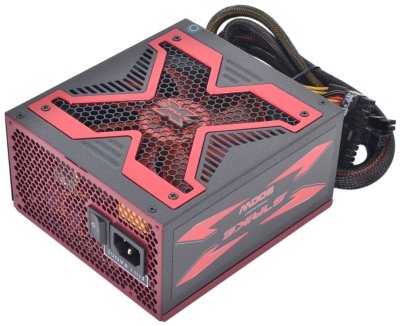 |
|
As a rule, blocks with different power are produced within the series. In the photo - Aerocool Strike-X Power with 80PLUS Bronze certificate |
For a simple office PC with integrated graphics or a not very powerful video card, a model up to 400 W is enough. If you are building a home computer for entertainment and gaming, then a 500W unit would be the best option - it will be enough for CPUs and mid-range graphics cards that will allow you to run modern games at high graphics settings.
If your plans include assembling a gaming “monster”, then a power of at least 700 W will be appropriate here, provided that one top-end video card is installed. With several video cards, things are a little different - for CrossFire / SLI modes you will need a unit from 850 W, depending on the number of video cards.
The above figures are relative; in practice, the declared power may be needed by the computer only at peak loads. Component manufacturers, as a rule, indicate the minimum required power for the correct operation of their devices, which allows you to calculate the required power of the unit yourself. Also on the network you can find many calculators that allow you to do this automatically - the user just needs to enter the configuration of his system.
Note that it is considered normal practice to buy a unit 50-100 watts more than needed at the moment. This will protect against various problems associated with a lack of power when overclocking the processor / video card, and will also make it possible to connect additional fans or a second hard drive in the future.
PC Power Supply Form Factor
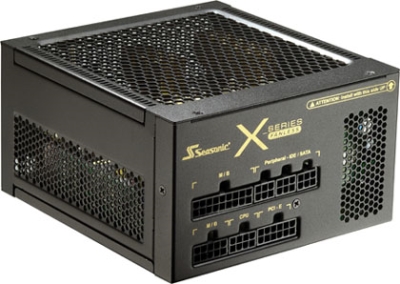 |
|
The Sea Sonic X-series Fanless unit uses a passive cooling system, can serve as a great solution for building a quiet computer |
With the form factor of power supplies, everything is simple. There are only three options:
ATX is the "classic" version, designed for use in conjunction with cases and motherboards of the same name. Dimensions correspond to 150x140x86 mm. The most common block size, perfect for multimedia and gaming systems.
TFX is a smaller version designed for installation in Mini-tower cases and measures 83x146x64mm. They differ from older brothers both in size and maximum power (it is lower). Perfect for office systems.
The SFX is a miniature version designed for installation in m-ATX cases where compactness can be critical. It uses the same connectors as the original ATX, is fully electrically compatible, but the dimensions are reduced to 100x125x64 mm.
How to avoid a common mistake when choosing a block
This point deserves special attention, since it largely depends on whether you can connect a brand new unit to the system. If you pay attention to the description of any motherboard in our catalog, then in the "Connectors on the board" section you can see two important parameters: "Main power connector" and "Processor power". Inexpensive power supplies usually have a standard set of cables for connecting to the motherboard - 24 + 4pin, where the first digit is the main power connector, and the second is the processor power.
But some powerful processors require additional power to run and have 8pin connectors. For such cases, there are more expensive blocks with 24+8pin cables. Pay attention to the processor that you are going to install inside the system before buying a power supply!
To date, almost any video card requires additional energy to work and has a 6 pin connector or 8 pin connector, for such models there are corresponding blocks with additional power 6 pin or 8 pin. Particularly powerful models need 8 + 8 pin power, but this already applies to super-gluttonous dual-chip models like the GTX690, GTX Titan Z and Radeon R9 295x2.
Many powerful units have a set of 24+8+8pin cables, which allows you to connect almost any video card without problems. With a lack of connectors, a video card usually comes with an adapter for powering from 4pin to 6 or 8pin.
What is the 80Plus certification and what does it mean?
This certification certifies that the power supply meets certain energy efficiency standards. The main requirement is compliance with the efficiency at a certain load. There are several options for 80Plus certifications that are assigned to power supplies.
- 80PLUS - corresponds to an efficiency of about 80%;
- 80PLUS Bronze - minimum efficiency from 81%;
- 80PLUS Silver - minimum efficiency from 85%;
- 80PLUS Gold - minimum efficiency from 88%;
- 80PLUS Platinum - minimum efficiency of 90%.
 |
| Table of dependence of the efficiency of the power supply on the load level |
Protection system and additional features
Many power supplies have some additional features that can be very useful for users.
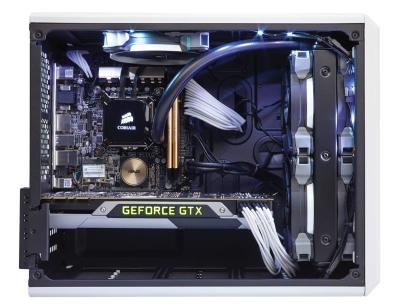 |
| Detachable cables keep things organized and tidy |
Power factor is one measure of the efficiency of a power supply. The higher it is, the better. The PFC system is applied to maintain this ratio at the maximum level. Active PFC is considered to be significantly more efficient than passive PFC, providing a coefficient up to 0.99; such units are better suited to work with the UPS and are less sensitive to voltage drops.
Modular cabling - the ability to remove unused wires for a tidy system appearance. Accordingly, this in no way affects the efficiency of work, but it is very convenient.
Overvoltage protection - the ability of the power supply to turn off when there is excessive voltage at the output, preventing damage to components. Over-current protection - when the output current rises, the unit will automatically turn off, preventing possible damage to the system. Short-circuit protection - shutdown when short-circuited.
The presence of backlighting has an exclusively decorative function - for lovers of beautiful systems.
What do we end up with?
The perfect power supply is likely to be one that exceeds the minimum required system power by about 50-100 watts. This will serve as a good guarantee for the future, and will ensure stable operation of the computer at peak loads today.
You should not save and give preference to cheap little-known brands, believing that power supplies are far from the most important element in the design of a computer. Poor-quality models can not last long or even damage components, the repair of which will cost much more than overpaying for eminent and high-quality power supplies.
And at the end of this review - a diagram of the power supply connectors and their detailed layout:
 |
Based on comprehensive statistics of the popularity of a particular model among the Internet audience.
The Complete Guide to Choosing Your Own Motherboard
Complete guides: differences between sockets, series hierarchy, cache value, number of cores
What are the differences between the matrices, what is the response time and what screen resolution should I choose?
A desktop with a computer is one of the most important places in the life of a modern person.
Articles, reviews, useful tips
All materials














